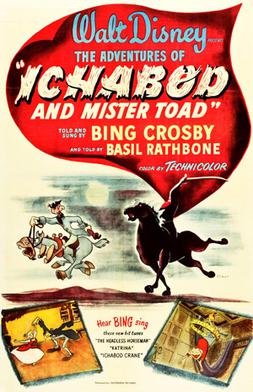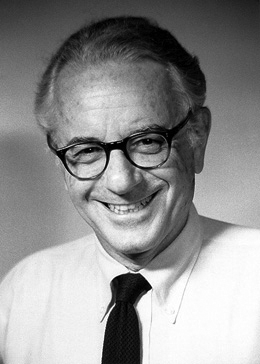
Walter Elias Disney was an American animator, film producer, and entrepreneur. A pioneer of the American animation industry, he introduced several developments in the production of cartoons. As a film producer, he holds the record for most Academy Awards earned and nominations by an individual. He was presented with two Golden Globe Special Achievement Awards and an Emmy Award, among other honors. Several of his films are included in the National Film Registry by the Library of Congress and have also been named as some of the greatest films ever by the American Film Institute.

Ubbe Ert Iwwerks, known as Ub Iwerks, was an American animator, cartoonist, character designer, inventor, and special effects technician, known for his work with Walt Disney Animation Studios in general, and for having worked on the development of the design of the character of Mickey Mouse, among others. Born in Kansas City, Missouri, Iwerks grew up with a contentious relationship with his father, who abandoned him as a child. Iwerks met fellow artist Walt Disney while working at a Kansas City art studio in 1919. After briefly working as illustrators for a local newspaper company, Disney and Iwerks ventured into animation together. Iwerks joined Disney as chief animator on the Laugh-O-Gram shorts series beginning in 1922, but a studio bankruptcy would cause Disney to relocate to Los Angeles in 1923. In the new studio, Iwerks continued to work with Disney on the Alice Comedies as well as the creation of the Oswald the Lucky Rabbit character. Following the first Oswald short, both Universal Pictures and the Winkler Pictures production company insisted that the Oswald character be redesigned. At the insistence of Disney, Iwerks designed a number of new characters for the studio, including designs that would be used for Clarabelle Cow and Horace Horsecollar.

Song of the South is a 1946 American live-action/animated musical drama film directed by Harve Foster and Wilfred Jackson; produced by Walt Disney and released by RKO Radio Pictures. It is based on the Uncle Remus stories as adapted by Joel Chandler Harris, and stars James Baskett as Uncle Remus in his final film role. The film takes place in the U.S. state of Georgia during the Reconstruction era, a period of American history after the end of the American Civil War and the abolition of slavery. The story follows seven-year-old Johnny who is visiting his grandmother's plantation for an extended stay. Johnny befriends Uncle Remus, an elderly worker on the plantation, and takes joy in hearing his tales about the adventures of Br'er Rabbit, Br'er Fox, and Br'er Bear. Johnny learns from the stories how to cope with the challenges he is experiencing while living on the plantation.

The Tigger Movie is a 2000 animated musical comedy-drama film produced by Walt Disney Television Animation with animation production by Walt Disney Animation (Japan), Inc., written and directed by Jun Falkenstein from a story by Eddie Guzelian, and released by Walt Disney Pictures on February 11, 2000. It is the second theatrical Winnie the Pooh film after The Many Adventures of Winnie the Pooh and features Pooh's friend Tigger as the main protagonist searching for his family tree and other Tiggers like himself. The film was the first feature-length theatrical Pooh film that was not a collection of previously released shorts.
A gossip columnist is someone who writes a gossip column in a newspaper or magazine, especially in a gossip magazine. Gossip columns are written in a light, informal style, and relate opinions about the personal lives or conduct of celebrities from show business, politicians, professional sports stars, and other wealthy people or public figures. Some gossip columnists broadcast segments on radio and television.
The golden age of American animation was a period in the history of U.S. animation that began with the popularization of sound cartoons in 1928 and gradually ended from 1957 to 1969, where theatrical animated shorts began losing popularity to the newer medium of television animation since in 1957, produced on cheaper budgets and in a more limited animation style by companies such as Terrytoons, UPA, Paramount Cartoon Studios, Jay Ward Productions, Hanna-Barbera, DePatie-Freleng, Rankin/Bass and Filmation. In artefact, the history of animation became very important in the United States.

Walter Winchell was a syndicated American newspaper gossip columnist and radio news commentator. Originally a vaudeville performer, Winchell began his newspaper career as a Broadway reporter, critic and columnist for New York tabloids. He rose to national celebrity in the 1930s with Hearst newspaper chain syndication and a popular radio program. He was known for an innovative style of gossipy staccato news briefs, jokes, and Jazz Age slang. Biographer Neal Gabler claimed that his popularity and influence "turned journalism into a form of entertainment".

Paul Winchell was an American ventriloquist, comedian, actor, humanitarian, and inventor whose career flourished in the 1950s and 1960s. From 1950 to 1954, he hosted The Paul Winchell Show, which also used two other titles during its prime time run on NBC: The Speidel Show, and What's My Name? From 1965 to 1968, Winchell hosted the children's television series Winchell-Mahoney Time.

Eugene Kal Siskel was an American film critic and journalist for the Chicago Tribune. He is best known for co-hosting various movie review television series with colleague Roger Ebert.

The Laugh-O-Gram Studio was an animation studio located on the second floor of the McConahay Building at 1127 East 31st in Kansas City, Missouri, that operated from June 28, 1921, to October 16, 1923.

The Disney family is an American family that gained prominence when brothers Roy and Walt began creating films through the Disney Brothers Cartoon Studio, today known as mass media and entertainment conglomerate The Walt Disney Company. The Disney family's influence on American culture grew with successful feature films such as Snow White and the Seven Dwarfs in 1937 and the opening of the Disneyland theme park in 1955. Other Disney family members have been involved in the management and administration of the Disney company, filmmaking, and philanthropy.

Fun and Fancy Free is a 1947 American animated musical fantasy anthology film produced by Walt Disney and Ben Sharpsteen and released on September 27, 1947 by RKO Radio Pictures. The film is a compilation of two stories: Bongo, narrated by Dinah Shore and loosely based on the short story "Little Bear Bongo" by Sinclair Lewis; and Mickey and the Beanstalk, narrated by Edgar Bergen and based on the "Jack and the Beanstalk" fairy tale. Though the film is primarily animated, it also uses live-action segments starring Edgar Bergen to join its two stories.

The Adventures of Ichabod and Mr. Toad is a 1949 American animated anthology film produced by Walt Disney Productions and released by RKO Radio Pictures. It consists of two segments: the first based on Kenneth Grahame's 1908 children's novel The Wind in the Willows and narrated by Basil Rathbone, and the second based on Washington Irving's 1820 short story The Legend of Sleepy Hollow and narrated by Bing Crosby. The production was supervised by Ben Sharpsteen, and was directed by Jack Kinney, Clyde Geronimi, and James Algar.
Joseph C. Grant was an American animator, artist and writer.

Richard Warren Schickel was an American film historian, journalist, author, documentarian, and film and literary critic. He was a film critic for Time magazine from 1965–2010, and also wrote for Life magazine and the Los Angeles Times Book Review. His last writings about film were for Truthdig.

Sneak Previews was an American film review show that ran for over two decades on Public Broadcasting Service (PBS). It was created by WTTW, a PBS affiliate in Chicago, Illinois. It premiered on November 26, 1975 as a monthly local-only show called Opening Soon...at a Theater Near You and was renamed in 1977 to Sneak Previews and it became a biweekly show in 1978 airing nationally on PBS. It grew to prominence with a review-conversation-banter format between opinionated film critics, notably for a time, Roger Ebert and Gene Siskel. By 1980, it was a weekly series airing on over 180 stations, and it was the highest rated weekly entertainment series in the history of public broadcasting. The show's final broadcast was on October 4, 1996.

Hannah Montana: The Movie is a 2009 American teen musical comedy drama film based on the Disney Channel television series of the same name. Directed by Peter Chelsom and written by Dan Berendsen, the film stars series regulars Miley Cyrus, Billy Ray Cyrus, Emily Osment, Moises Arias, Mitchel Musso and Jason Earles, as well as Lucas Till, Vanessa Williams, Margo Martindale and Melora Hardin. The film tells of how Miley Stewart's popularity begins to take over her life, so her father convinces her to take a trip to her hometown of Crowley Corners, Tennessee to get some perspective on what matters most in life.

Maurice Harry Rapf was an American screenwriter and professor of film studies. His work includes the screenplays for early Disney live-action features Song of the South (1946) and So Dear to My Heart (1949), uncredited work on the screenplay for the animated feature Cinderella (1950), and several films of the late 1930s. He was a co-founder of the Screen Writers Guild. He was blacklisted in 1947 due to his association with the Communist Party USA. He later taught film studies at Dartmouth College.

Walt Disney is a documentary film created by PBS for the American Experience program. The two-part, four-hour documentary premiered on September 14, 2015 with part two on the following day and centers on the life, times and legacy of Walt Disney. According to Sarah Colt, director of the documentary film, the biggest challenge was "capturing the truth of the man who had such [an] outsized influence and notoriety ... People think they know him but in reality they don't know him ... He was a human being with many layers of complexity." Rob Lowman, of the Los Angeles Daily News, described "Disneyesque" as being "synonymous with a specific artistic style and, eventually, a fantasy world." Richard Sherman, a Disney songwriter, recalled that "Disney was never driven by a desire for wealth or fame. He wanted to be seen as a master storyteller ... He got great joy out of making people happy with his movies."
Below are a list of works related to the history of Hollywood, California.
















